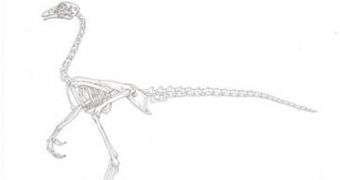Fancy making a dinosaur from a chicken! IT may sound far-fetched, but it's actually not, as evidenced by the fact that leading paleontologists around the globe are currently teaming up to create a creature literally unlike anything the world has ever seen. They are going to come up with a chicken-dinosaur hybrid by “simply” modifying a few of the genetic traits of a chicken embryo to fit the description of its ancestors.
The team hopes to obtain a “half-chicken, half-dinosaur” hybrid in the lab, which it could then study so as to learn more about the extinct creatures. Discovery News has learned from Montana State University professor of paleontology Jack Horner, the project leader, that the new creature will be named either “chickenosaurus” or “dinochicken.”
It's well known that birds are direct descendants of dinosaurs, so the researchers will now attempt to suppress the regulatory proteins that they themselves evolved to suppress dinosaur-like characteristics in birds, such as claws, fangs and forearms. In all evolved species, the action of proteins is what separated these species from their predecessors, millions of years ago. Even in humans, if the actions of some genes are inhibited, there's no telling of what could happen.
“Birds are dinosaurs, so technically we're making a dinosaur out of a dinosaur. The only reason we're using chickens, instead of some other bird, is that the chicken genome has been mapped, and chickens have already been exhaustively studied. A number of people in a number of different places are moving forward with the project slowly and carefully,” Horner, who is also a curator of paleontology at the Museum of the Rockies, says.
“The growth of the tail is tied to the growth of the spinal cord, and spinal cord birth defects in humans are a major medical problem. Learning more about what prompts and stops tail growth could give us important insights about serious human birth defects,” he adds. The scientist has also sought to assure people that the new animal will pose no danger to the population and existing ecosystems, as it will be kept in the lab. Even if it somehow escapes, the chances of it reproducing successfully are zero.

 14 DAY TRIAL //
14 DAY TRIAL //